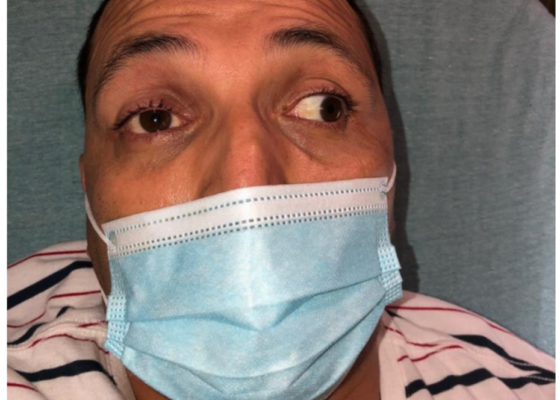Latest Articles
Case Report of a Man with Right Eye Pain and Double Vision
DOI: https://doi.org/10.21980/J8KW7GABSTRACT: A 39-year-old previously healthy male presented with three days of right eye pressure and one day of binocular diplopia. He denied history of trauma, headache, or other neurological complaints. He had normal visual acuity, normal intraocular pressure, intact convergence, and no afferent pupillary defect. His neurologic examination was non-focal except for an inability to adduct the right eye past midline
The Zipperator! A Novel Model to Simulate Penile Zipper Entrapment
DOI: https://doi.org/10.21980/J8NS8FAfter training on the Zipperator, learners will be able to: 1) demonstrate at least two techniques for zipper release and describe how methods would extrapolate to a real patient; 2) verbalize increased comfort with the diagnosis of zipper entrapment; and 3) present a plan of care for this low-volume, high-anxiety presentation.
Two-Screen Virtual Board Game Didactic for Teaching Wilderness and Environmental Medicine Topics to Emergency Medicine Residents
DOI: https://doi.org/10.21980/J8J343By the end of this didactic, the learner will: 1) describe the basics of the presentation of each topic listed above; 2) recall the basics of management of each topic listed above; and 3) improve learners’ preparedness for the Emergency Medicine Inservice Exam and Written Board Examination
Working with Senior Residents: How to get past “You’re doing great!”
DOI: https://doi.org/10.21980/J8D93JABSTRACT: Audience: This content is intended for emergency medicine faculty. Introduction: Faculty at our institution noted that it can be easy to identify and address the knowledge gaps of junior learners. However, they often find different skills are needed when precepting senior residents, a sentiment shared by faculty at other institutions.1 To foster the skills needed for lifelong learning and
Small-Scale High-Fidelity Simulation for Mass Casualty Incident Readiness
DOI: https://doi.org/10.21980/J84S8SThe learners will (1) recognize state of mass casualty exercise as evidenced by verbalization or triaging by START (Simple Triage and Rapid Treatment) criteria, (2) triage several patients, including critically ill or peri-arrest acuities, according to START criteria, (3) recognize the need to limit care based on available resources, as evidenced by verbal orders or communication of priorities to team, and (4) limit emergency resuscitation, given limited resources, by only providing treatments and employing diagnostics that do not deplete limited time, staffing, and space inappropriately.
Cardiac Arrest in an Adolescent with Pulmonary Embolism
DOI: https://doi.org/10.21980/J8135TABSTRACT: Audience: The target audience of this simulation is emergency medicine residents and medical students. The simulation is based on a real case of a 13-year-old female who presented with seizures and hypoxia and was ultimately diagnosed with pulmonary embolism. The case highlights diagnosis and management of an adolescent with new onset seizures, deterioration in status, and treatment options in

